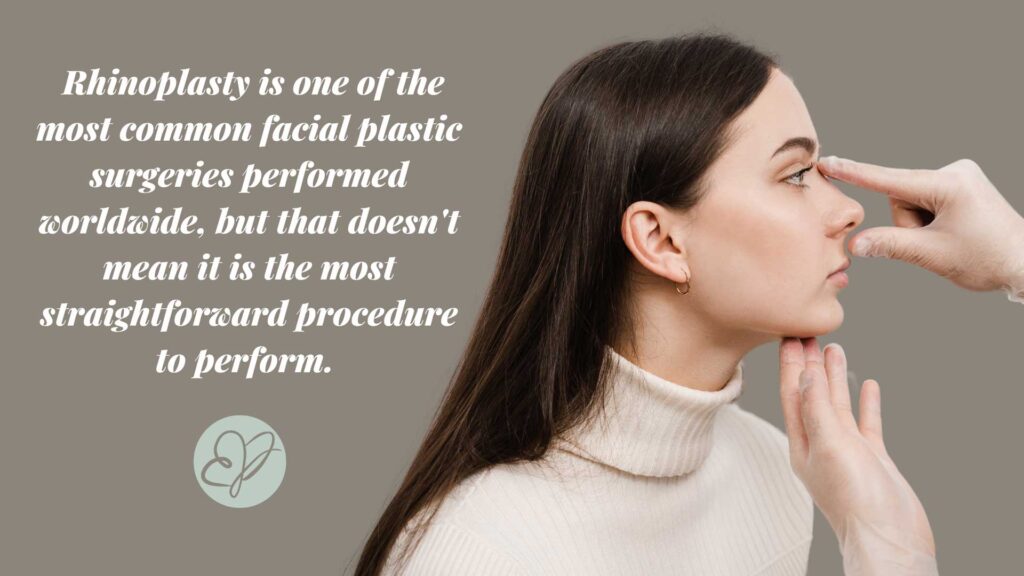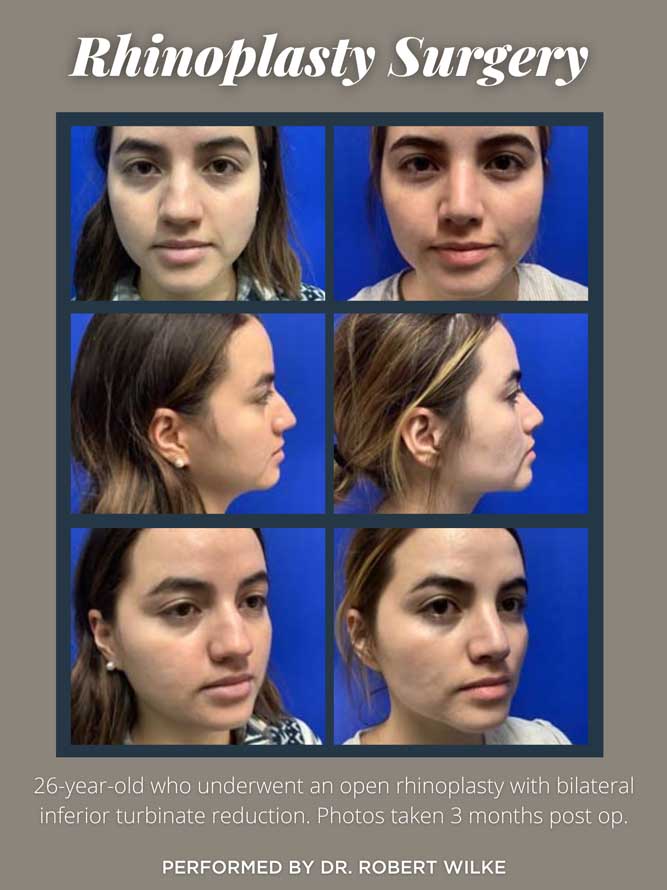Rhinoplasty is one of the most common facial plastic surgeries performed worldwide, but that doesn’t mean it is the most straightforward procedure to perform. In fact, rhinoplasty surgery is quite complex and requires a plastic surgeon with advanced skill to achieve the most natural-looking results. Although the nose is only one feature of the human face, it is a focal point that can significantly impact the overall balance and attractiveness of its features. A successful rhinoplasty can correct asymmetries, reshape the nose, improve the profile, and ultimately refine a patient’s facial appearance.

“It may sound funny to say, but I have immense respect for the human nose,” says Dr. Robert Wilke, a board-certified plastic surgeon and partner with Edina Plastic Surgery. “It is small in relation to the rest of the body, but it plays such a vital role in both function and how it influences the appearance of the rest of the face. Any tiny variance in its shape, size, alignment, or symmetry can significantly impact the overall balance of the face and how a patient feels about their appearance. A successful rhinoplasty can dramatically improve a patient’s confidence.”
Why might someone seek rhinoplasty surgery?
Rhinoplasty addresses the specific challenges a patient may have regarding the structure and appearance of their nose. This can vary greatly from patient to patient. Some of the most common reasons why someone may seek rhinoplasty surgery include:
- To remove a hump or bump on the bridge of the nose
- To narrow the bridge of the nose if it is too wide
- To shorten the length of the nose
- To straighten a crooked nose
- To reshape a bulbous or boxy nasal tip
- To achieve better facial balance and symmetry
- To correct a sharp incline or decline of the nasal tip
- To narrow or widen the nostrils
How is rhinoplasty surgery performed?
“Nose surgery is most commonly performed with general anesthesia for the safety of the patient and airway protection,” explains Dr. Wilke. “After anesthesia is administered, an incision is made along the inside of the nostrils. Your surgeon will decide on the type of incision based on the complexity of the procedure planned. Once this incision is made, your surgeon can access the structure of the nose and make necessary adjustments. These adjustments may include having cartilage removed, an implant added, cartilage straightened or repositioned, and tissue excised. We may also break and reset the nasal bones. After, the incision is closed and sutured very discreetly under the folds of the nostrils.”
What is the difference between an open and closed rhinoplasty?
An open or closed rhinoplasty may be performed depending on the structure of a patient’s nose and their aesthetic goals.
“During a closed rhinoplasty, incisions are made inside the nostrils,” says Dr. Wilke. “This placement removes any chance of visible scarring but also limits your surgeon’s access to the inner structure of your nose. During your initial consults, we’ll decide if this approach is appropriate for you and your goals.”
“An open rhinoplasty gives your surgeon the most freedom to access your nasal structure in its entirety, which can lead to more dramatic results,” explains Dr. Wilke. “But there is a slight trade-off in that the incision for the open method is made externally across the tissue that separates the nostrils. A scar may be visible at first with an open rhinoplasty, but it will fade significantly after one year.”
What are the recovery and results like after rhinoplasty surgery?
Immediately following rhinoplasty surgery, it is common to experience pain, stuffiness, and swelling and bruising throughout the face. A splint may be placed inside your nose to keep your new nasal structure in place while it heals.
“The facial swelling and bruising that results from rhinoplasty surgery will start to subside within a few weeks after your procedure, so it’s important to be patient when assessing your results,” Dr. Wilke advises. “The final shape of your nose will only be apparent once all postoperative swelling is gone, which can take up to a year. Also, because rhinoplasty can be so complex, it is not uncommon to need minor revisions down the road to fine-tune your results.”
Why should you only have rhinoplasty performed by an experienced and board-certified plastic surgeon?
Rhinoplasty is a fantastic procedure to sculpt a nose that looks natural, functions properly, and enhances overall facial harmony. While the risks of surgical complications are relatively low, it’s important to remember that rhinoplasty is still a serious medical procedure.
“Nose surgery is intricate and involves several tissue types, including bone, cartilage, and skin,” explains Dr. Wilke. “On top of that, the structure of the nose itself is quite complex and is intimately woven into the function of breathing. Obviously, a patient’s ability to breathe effectively is not something we want to jeopardize. For that reason, a rhinoplasty should only be performed by a board-certified and experienced plastic surgeon who has devoted years to perfecting their technique to ensure the safety and satisfaction of their patients.”

Are you interested in enhancing the overall appearance of your face with rhinoplasty? Schedule a complimentary consultation to discuss your goals with Dr. Robert Wilke or another board-certified plastic surgeon at Edina Plastic Surgery by calling (612) 688-3166, texting (952) 925-1765, or CLICKING HERE.


